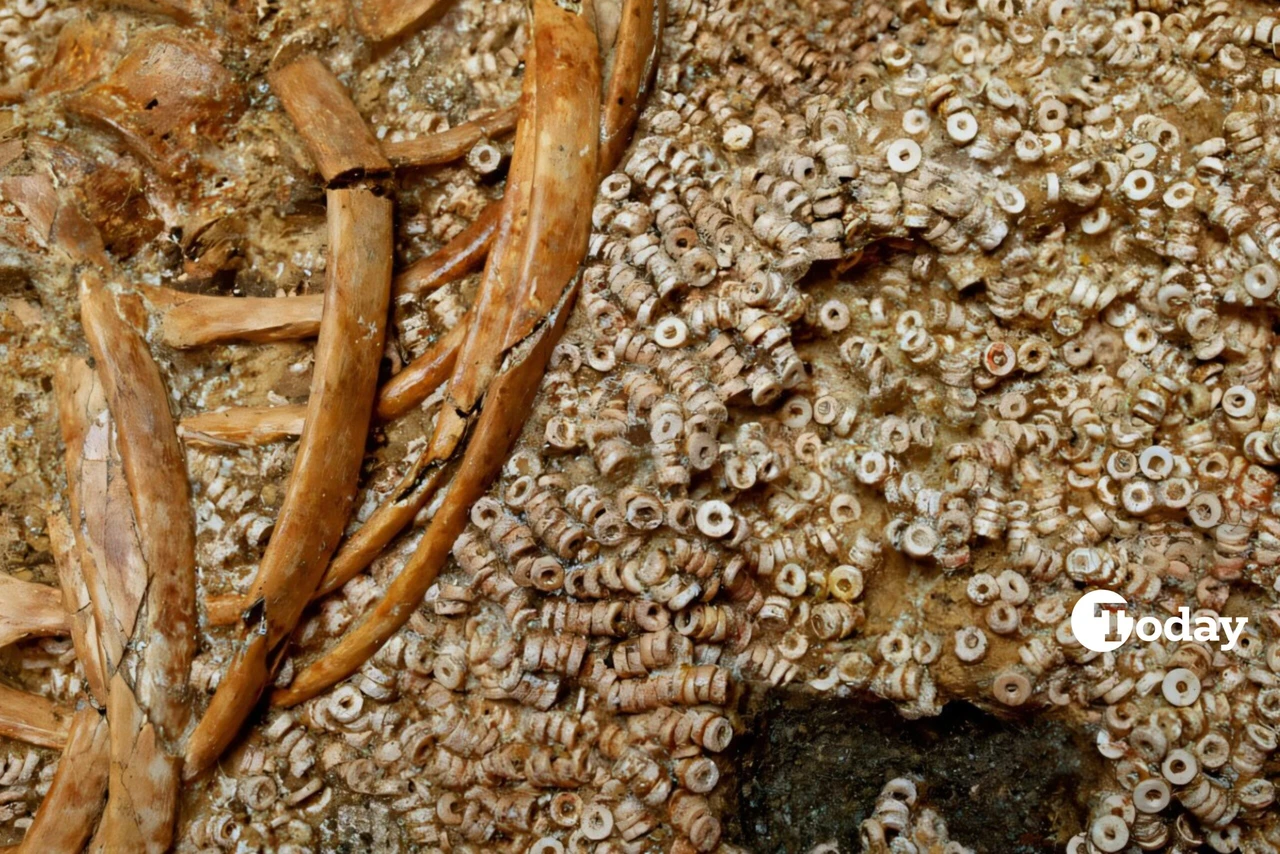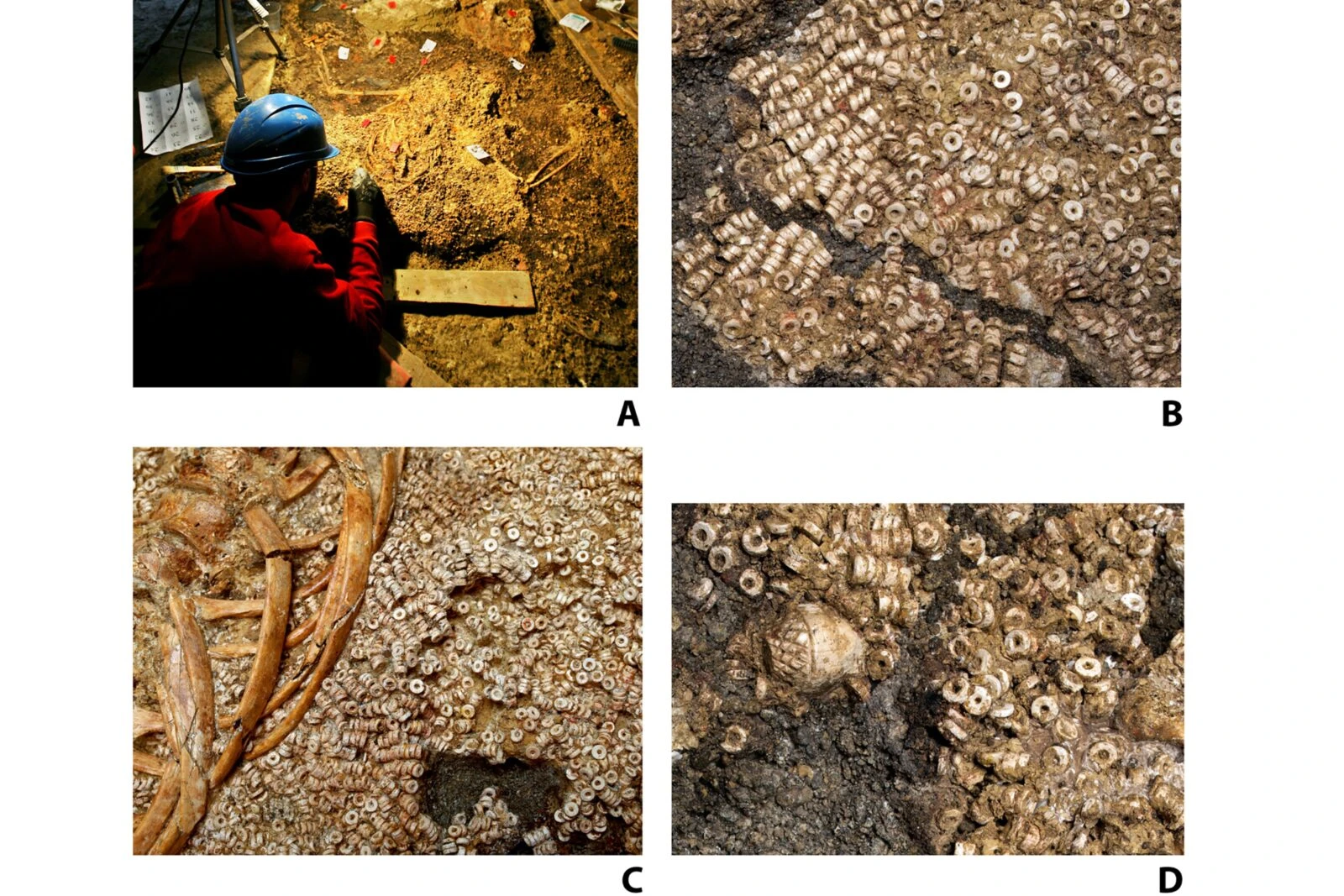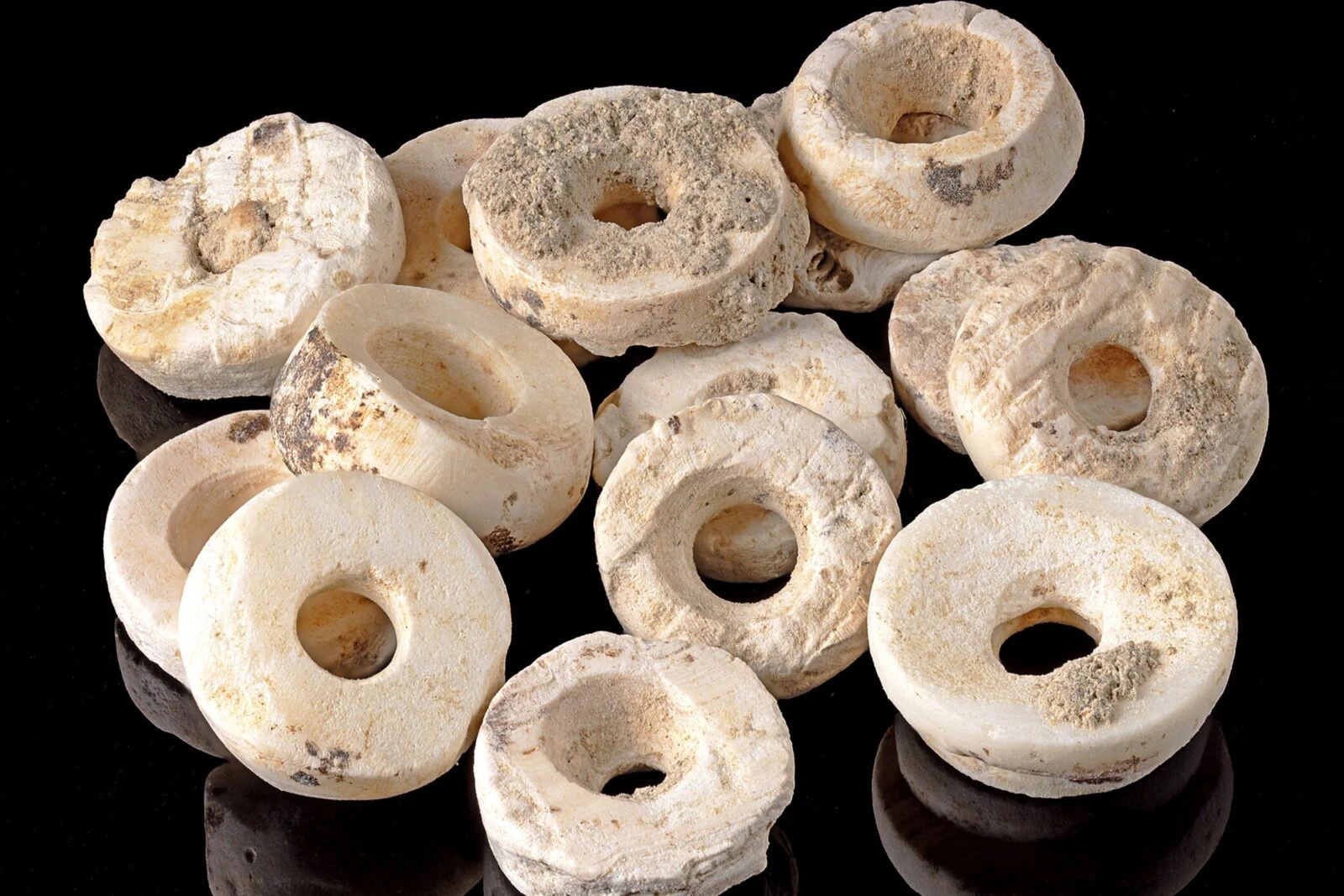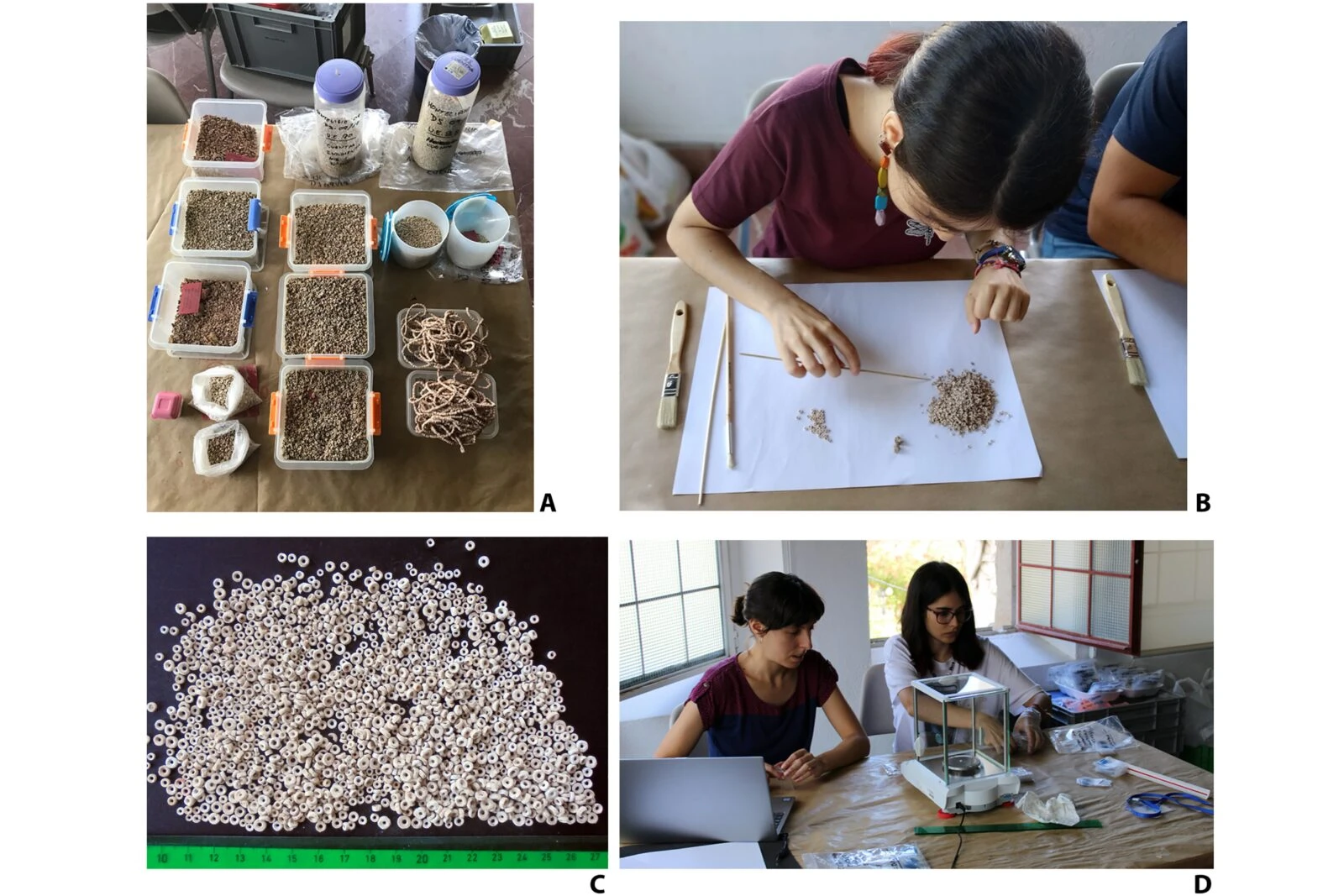Mysterious ancient tomb in Spain holds 270,000 beads, hinting at elite status
 Beads and ivory acorn found in situ on attire of Individual 343. (Photo via Science Advances)
Beads and ivory acorn found in situ on attire of Individual 343. (Photo via Science Advances)
A team of archaeologists and historians has confirmed the discovery of the world’s largest single-burial assemblage of beads at the Montelirio megalithic site in Spain.
The find, published in Science Advances, reveals over 270,000 meticulously crafted beads buried with high-status individuals approximately 5,000 years ago.

Prehistoric megalithic wonder
Montelirio, an ancient burial site dating between 2,875 and 2,635 B.C., has long intrigued archaeologists. Discovered in 1868, the site was left largely unexplored until serious excavations began in 1980. It was used for around 200 years as a major funerary complex, housing numerous tombs filled with artifacts.
In their latest excavation, researchers focused on a burial chamber located 100 meters from the renowned “Ivory Lady” tomb—a site named after the discovery of a woman buried with an ivory comb and an elephant tusk. This newly examined tomb contained the remains of 20 individuals, 15 of whom were identified as women.

Record-breaking treasure of beads
The excavation uncovered an astonishing number of beads—more than 270,000—painstakingly crafted from seashells. Each bead was carefully shaped and perforated, likely to be threaded into elaborate garments. The sheer scale of the find sets a new record, surpassing any known single-burial bead collection in history.
Labor behind legacy
The researchers conducted experiments to replicate the bead-making process and estimated that each bead required about 10 minutes to craft. At that rate, it would have taken a team of 10 people working eight-hour days for 206 consecutive days to complete the full set.
This suggests that the women buried in the tomb held exceptional social status, possibly as revered figures in their community.

Glimpse into prehistoric hierarchies
The discovery at Montelirio provides fresh insights into prehistoric social structures, particularly the elevated role of certain women.
The immense effort required to create and assemble the bead-covered attire implies a complex society where craftsmanship, status, and burial rituals were deeply intertwined.



